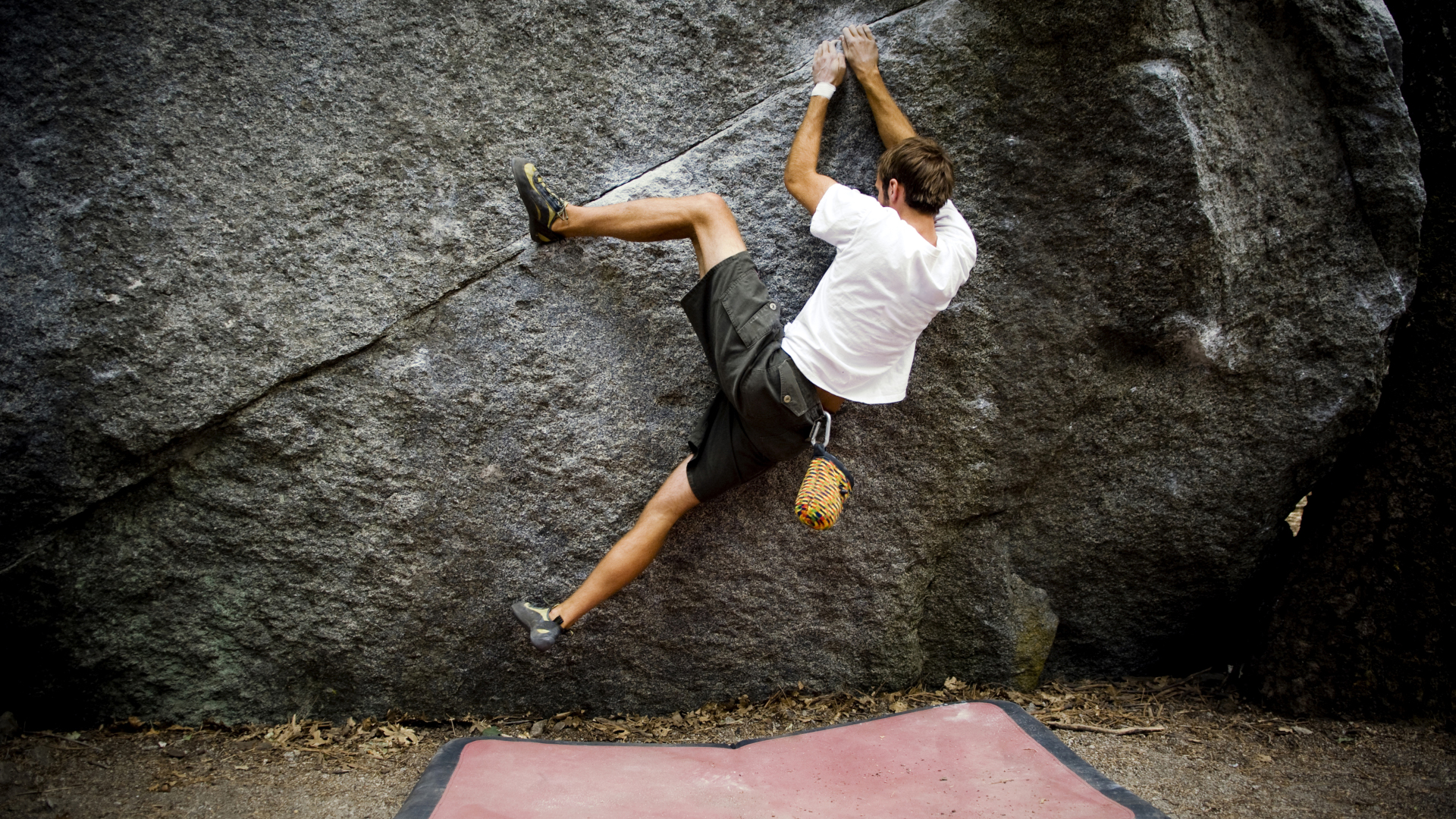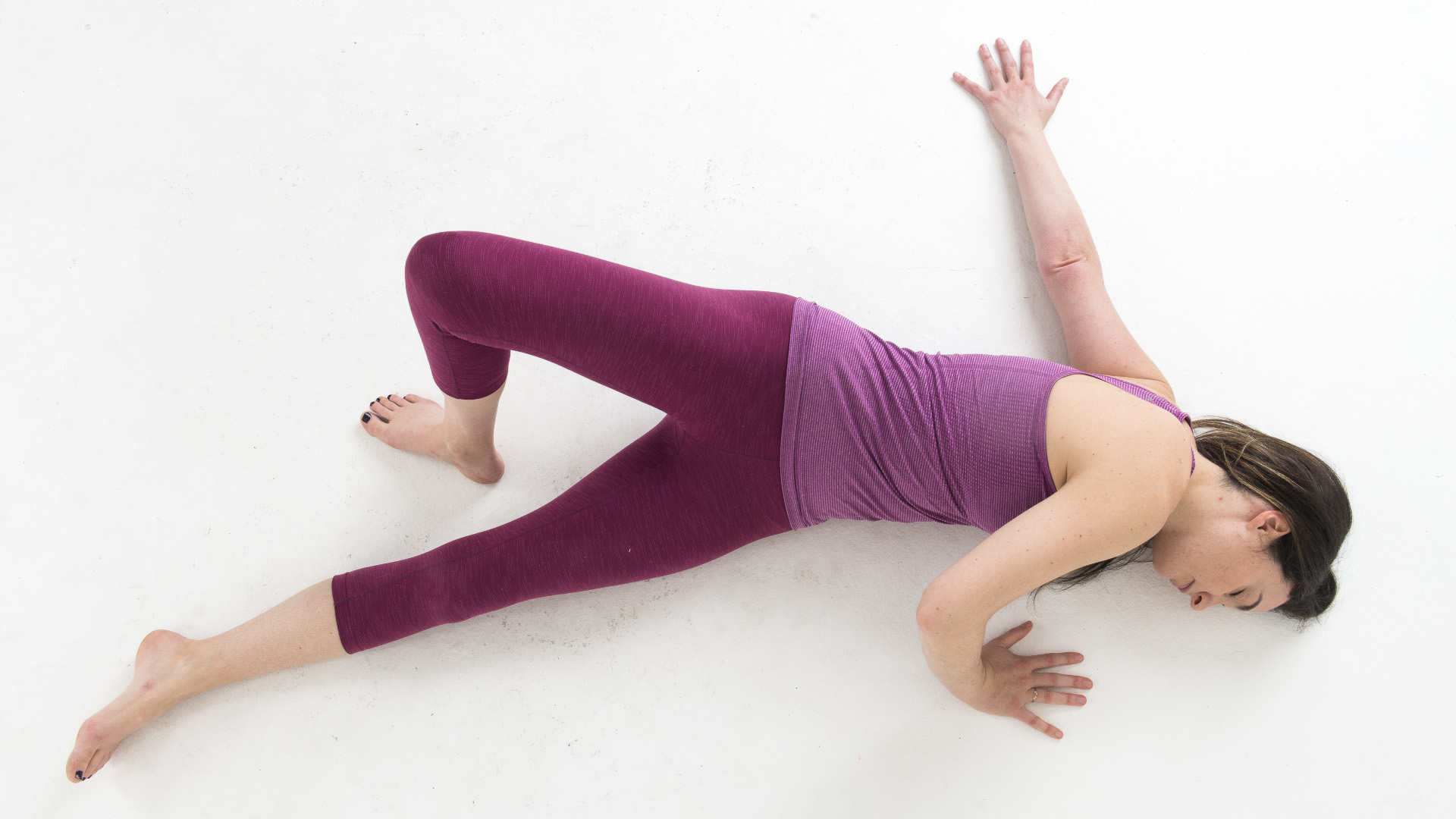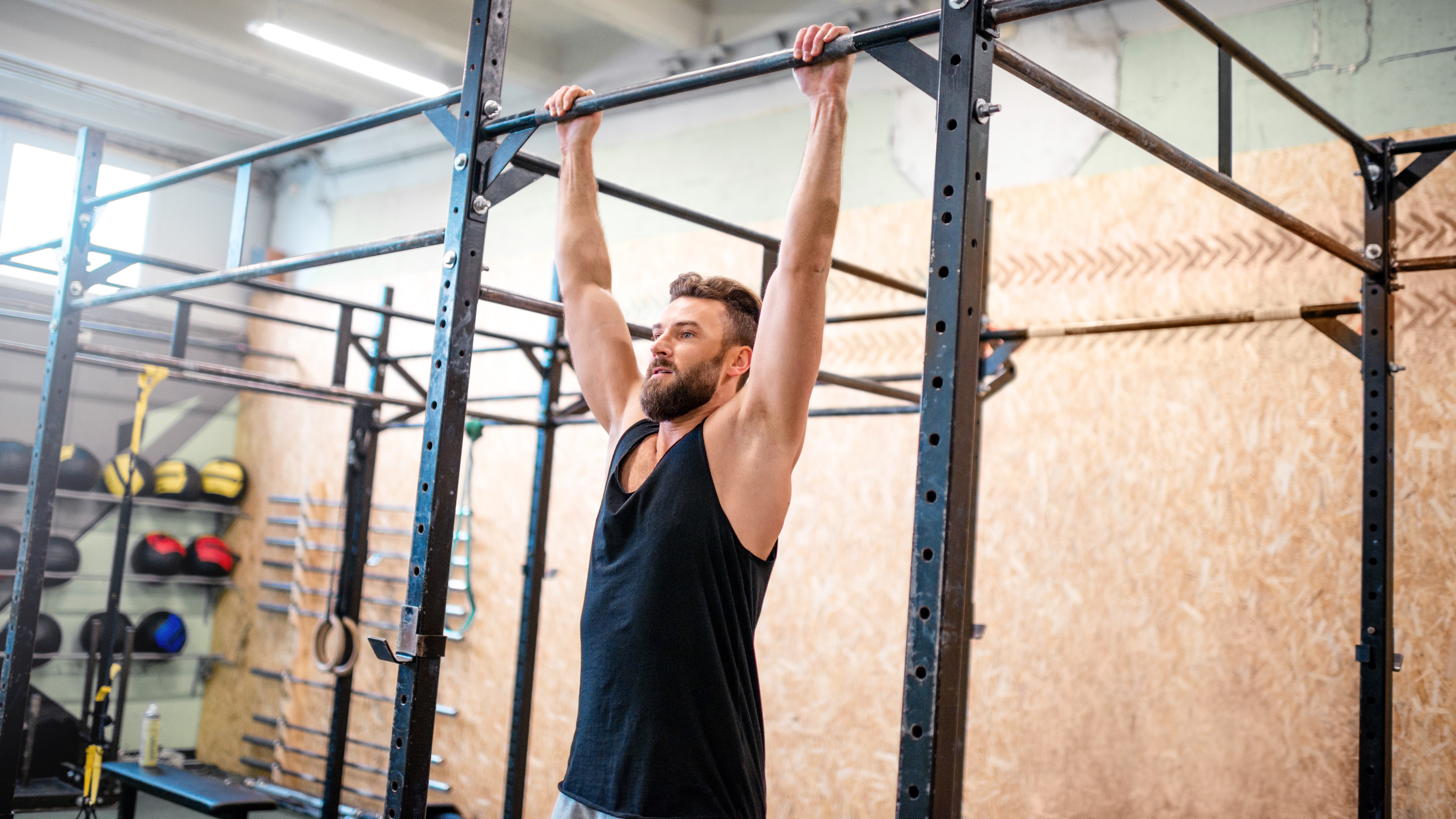What is climber’s back – and what can you do about it?
Elite climbers often present with a hunched back and it can cause you pain, stiffness and even affect your digestion and mental health

In an age where too much time spent hunching over screens is causing an epidemic of poor posture, getting your rock climbing shoes on and spending a few hours at the crag seems like it should be the perfect medicine. That’s why it’s really annoying for some climbers to discover that the very activity they’ve chosen to support their physical health might also be affecting their posture.
Climber’s back is a term long assigned to the phenomenon of a hunched posture that seems to be common among some elite climbers. Though for years, no scientific proof of the condition was presented, more recent studies have indicated that climbing can indeed produce a hunched posture. We recently spoke to Ilaria Campoli, climbing instructor and PT at Parthian Climbing, a new indoor climbing wall in London, to find out what causes climber’s back, and what you can do about it.

What causes climber’s back?
According to a 2009 study published in the International Journal of Sports Medicine, so-called climber’s back presents as kyphosis – the anatomical term for a rounded or hunched back – in the upper back or thoracic spine. The study found it was more common amongst elite climbers compared to recreational climbers and, like any postural complaint, it can lead to pain and discomfort. So while it might not affect your climbing ability, climber’s back might impact your sense of wellbeing in daily life.
“This problem is a typical result of the repeated stress and strain placed in the upper back and shoulders during climbing activities. Climbers need to reach upward, which can lead to a rounded upper back and shoulders that are rolled forward. Over time, this posture can contribute to muscle imbalances, tightness, and discomfort,” explains Campoli.
As a longtime yoga teacher, I work with a lot of students to help them correct postural problems. Kyphosis is the result of two anatomical forces. First, the fibers of some muscles on the front of your body, such as your pecs, abs and hip flexors become contracted, through overuse (climbing) or underuse (sitting for long periods of time). Second, the fibers of some of the muscles on the back of your body, say your rhomboids, trapezius and glutes, become lengthened. It makes a lot of sense, then, that over time, rock climbing can create a rounded posture, since it generally requires you to contract your anterior muscles and lengthen your posterior muscles.
In particular, the 2009 study suggests that climber’s back is probably influenced by shortened pectoralis muscles. Your pecs connect your humerus bone to your rib cage and their primary job is to adduct your arm, or bring it closer to your body. Basically, every second that you're holding yourself against the wall, your pecs are working, and while keeping them strong is key, keeping them ultra strong may be causing your shoulders and upper spine to round forward.

How do I get rid of my climber’s back?
Excessive kyphosis can lead to pain and stiffness, limited mobility and digestive problems according to the Mayo Clinic, and as I write about in my book, Restorative Yoga for Beginners, it can even impact your mental health. If you’re experiencing climber's back, you may be keen to reverse the effects of climbing on your spine.
All the latest inspiration, tips and guides to help you plan your next Advnture!
Campoli explains that previous studies show that this problem can’t be totally avoided but there are some routines that can help individuals who experience similar postural issues that you can implement to help offset any hunching in your spine.
1. Stretching
Stretching alone won’t solve the problem, but if you’re aware that you’re doing a lot of climbing and not very much stretching, it’s an important first step. When I’m at the bouldering wall, I see a lot of climbers doing hip stretches before they climb to improve hip mobility, but after you climb it’s also important to have a routine of stretches that target your chest, shoulders, and upper back to help improve flexibility and reduce muscle tightness.
Take a look at my yoga for rock climbers routine and make sure you start to incorporate Starfish Pose, pictured below, into your regular cool down.

2. Strengthening
While stretching the front of your body will help, you’ll also need to counter the excessive lengthening that some of your back muscles are subject to when you’re climbing, and you can do that with strength training, according to Campoli.
“Strengthening exercises for the muscles of the upper back, including the rhomboids and trapezius muscles, can help counteract the effects of the rounded posture,.”
In particular, pull down exercises at the gym, on the pullup bar or using resistance bands where you’re focusing on depressing your shoulder blades are helpful to combat climber's back and will also have the bonus benefit of improving your climbing. Meanwhile, the exercises in my guide to yoga poses for glute strength can help keep your glutes and lower back supple to support a more upright position in daily life.

3. Posture awareness
While getting in the gym or to the yoga studio can have a physical impact on climber’s back, Campoli explains that when it comes to posture, there are more subtle forces at play that can be put to good use, since most often, we don't even realize that we are slouching.
“Being mindful of one’s posture during climbing and other activities is crucial. Practicing good posture can help prevent the development or worsening of climber’s back.”
Though you will often have to round your back in order to send that next move, take care when you’re hanging out between climbs, on belay and even when you’re standing in line at the post office. Pay attention to your posture and stand upright, with your shoulders back.

4. Rest and recovery
Finally, any repetitive strain on your body as a result of climbing, whether it be tendonitis or poor posture, may just be partly down to overdoing things.
“Giving the body time to recover between climbing sessions can help reduce the strain on the upper back and shoulders,” advises Campoli.
When your body is tired, it will find pathways of least resistance to save energy which can result in poor posture. To avoid overtraining, make sure you schedule in adequate rest days between climbing sessions. On these days, you can enjoy foam rolling and sports massage as well as active rest activities like yoga, pilates, walking and swimming. Read more in our article on overtraining syndrome.
Julia Clarke is a staff writer for Advnture.com and the author of the book Restorative Yoga for Beginners. She loves to explore mountains on foot, bike, skis and belay and then recover on the the yoga mat. Julia graduated with a degree in journalism in 2004 and spent eight years working as a radio presenter in Kansas City, Vermont, Boston and New York City before discovering the joys of the Rocky Mountains. She then detoured west to Colorado and enjoyed 11 years teaching yoga in Vail before returning to her hometown of Glasgow, Scotland in 2020 to focus on family and writing.

